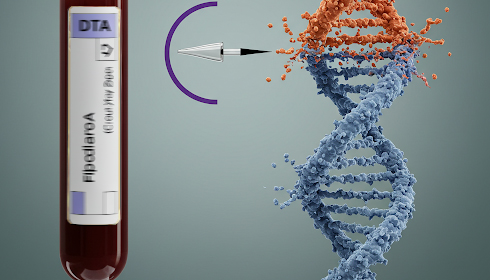
Landmark Study Exposes Hidden Pitfalls in Blood-Based RNA Biomarker Research
In a major development, the exRNAQC Consortium conducted a comprehensive investigation that found that conventional blood collection and processing techniques can substantially skew extracellular RNA (exRNA) analysis, potentially jeopardising the credibility of biomarker studies in cancer, cardiovascular, and autoimmune illnesses.
The study, published in Nature Communications, is the most extensive review of factors before testing—like the types of tubes used, how long the blood is processed, and the methods for purifying RNA—that affect how RNA molecules are measured in blood plasma and serum. These exRNAs have potential as "liquid biopsy" indicators for non-invasive disease monitoring, but measuring their stability and precision remains difficult.
The scientists analysed 1.6 litres of blood drawn from 20 healthy donors using 10 blood collection tubes (including five preservative containers advertised to stabilise RNA), three processing time intervals, and eight RNA purification methods. Contrary to predictions, preservation tubes performed poorly, exhibiting unstable RNA levels over time and increased haemolysis (a sign of sample degradation). In contrast, ordinary EDTA and citrate tubes, particularly when processed within four hours of blood collection, retained RNA content significantly more dependably.
"Our results clearly demonstrate that classic tubes are more robust than specialised preservation tubes, even at longer storage intervals," the study's authors wrote.
RNA purification procedures also varied substantially. The widely used QIAamp and miRNeasy kits surpassed others in terms of RNA concentration, gene detection rate, and reproducibility. High RNA input volumes and low eluate volumes improved performance, but the benefits differed according to the technique and tube combination.
Some approaches have high duplication rates, which impacted the variety and accuracy of the obtained transcriptome data. Notably, residual DNA contamination in the MagNA Pure approach rendered the results unsuitable for mRNA analysis.
One of the study's most important results was the interaction of variables, such as how a specific purification procedure performed differently based on the tube used or the period before processing. If this interaction is not considered in study designs, it has the potential to cause significant bias.
"We discovered that even the best-performing methods can fail under certain conditions," the researchers warned. "You cannot simply mix and match tools from different protocols..
The researchers also demonstrated that even in the best-performing tubes, delays in blood sample processing resulted in selective gene expression changes. By using transcriptome-wide sequencing, they found important changes in mRNA and miRNA levels after blood samples sat for 4 to 16 hours, which might be wrongly interpreted as signs of disease.
For Researchers: Follow strict protocols, use citrate or EDTA tubes, and process samples within four hours.
Manufacturers could improve purification kit compatibility with different tubes and processing conditions, as well as extensively validate preservation tubes.
These findings call into question current European regulations, which favour preservation tubes for long-term biobanking. The researchers advocate for a critical re-evaluation of such guidelines in light of their findings.
As exRNA-based diagnostics approach clinical deployment, this study establishes a new standard for experimental design and quality control. Its findings may significantly improve the reliability and validity of future biomarker discoveries.
"Precision medicine depends on precision methods," the authors conclude. "Without standardisation and transparency in sample handling, we risk mistaking technical artefacts for biological signals."
The exRNAQC study is more than simply a cautionary tale; it also provides a precise guide for traversing the complicated landscape of extracellular RNA research.